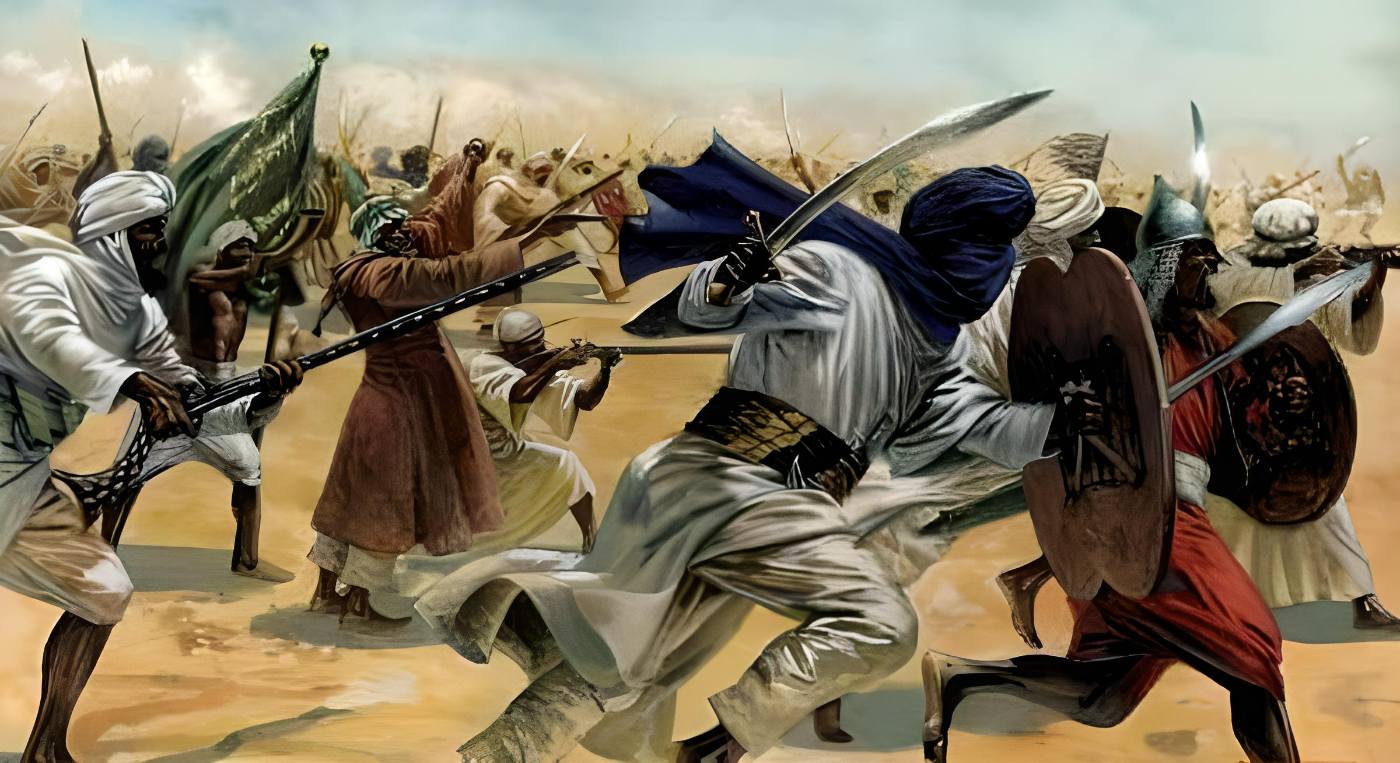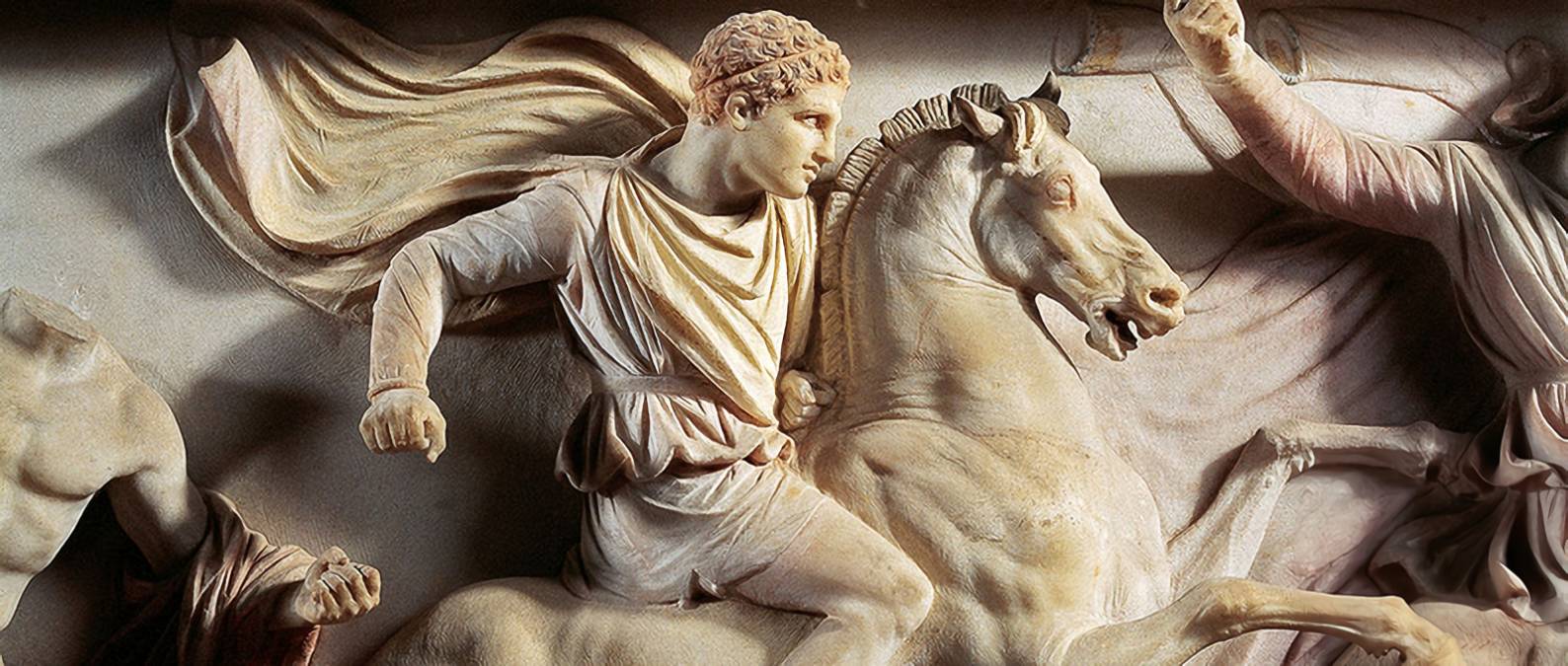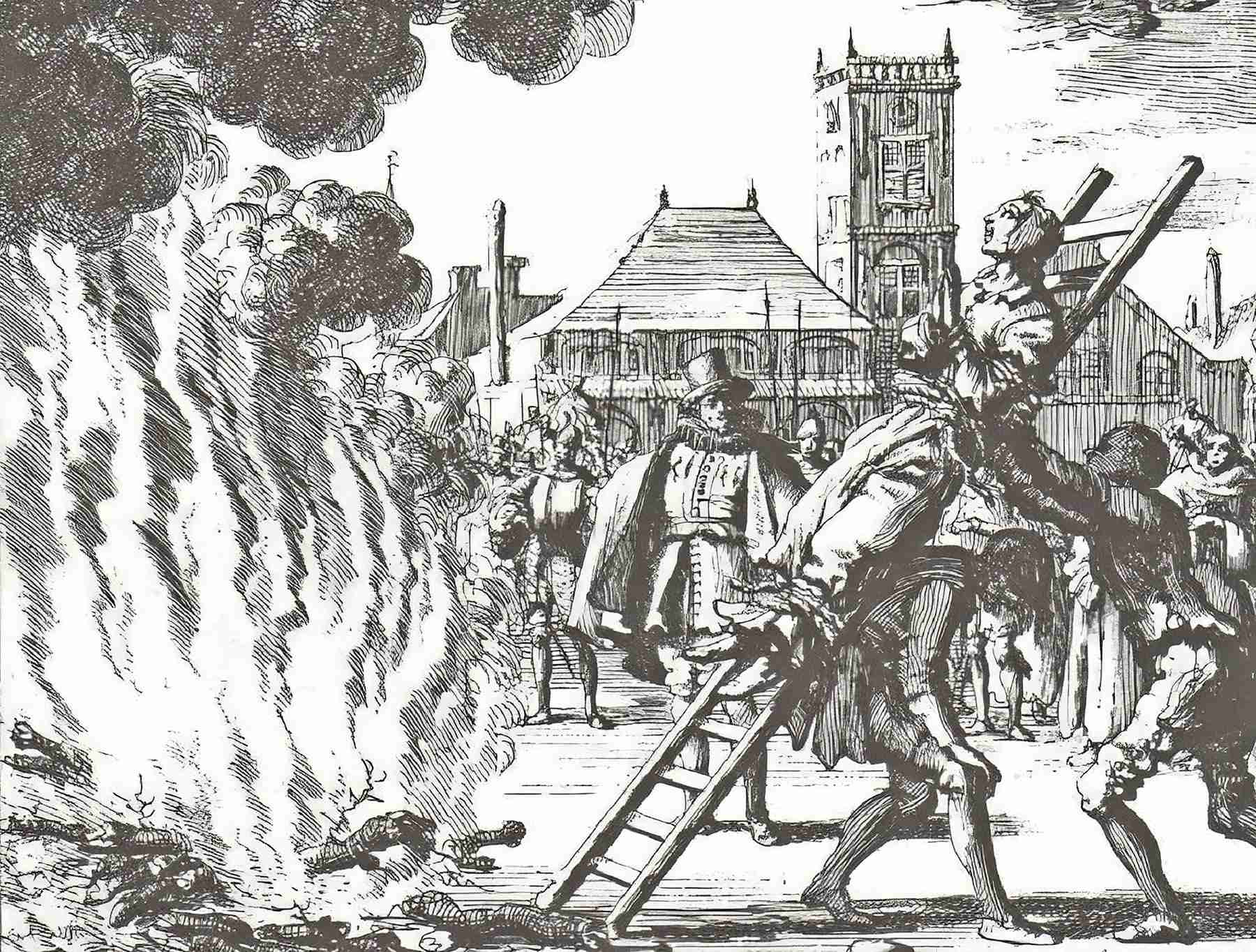The history of Al-Andalus is full of clichés and even delusions; it is also little recognized outside of Spain due to ongoing historiographical disagreements there that are compounded by regional particularism. Still up for grabs is where the term “Al-Andalus” came from in the first place. The Muslims (Moors) gave the whole Iberian Peninsula the Arabic name “Al-Andalus” for the Vandals who inhabited the area about the year 5th century. Over time, the term “Al-Andalus” (or “Andalusia”) began to refer to the region where Muslims exercise political authority. Some see it as an example of how diverse civilizations may live in harmony and with tolerance, including the locals (Iberians, Visigoths, etc.), Arabs and Berbers, Christians, Jews, and Muslims. However, the history of Muslim Spain was rife with dramatic events and fissures whose effects may still be felt today. These events were thrilling from a political, cultural, and theological standpoint as well.
- Islam’s expansion in the Mediterranean
- The conquest of the Iberian Peninsula
- The Umayyad Caliphate of Al-Andalus
- The Umayyad Caliphate of Cordoba
- The decomposition of the caliphate
- Taifa kingdoms
- The Almoravids were summoned
- The new Almohad Caliphate
- Taifa rule came to an end, and the Nasrid Kingdom (Emirate of Granada) rose to power
- The kingdom’s unification and the Battle of the Strait
- The peak of Nasrid
- Civil warfare and the end of Al-Andalus
Islam’s expansion in the Mediterranean
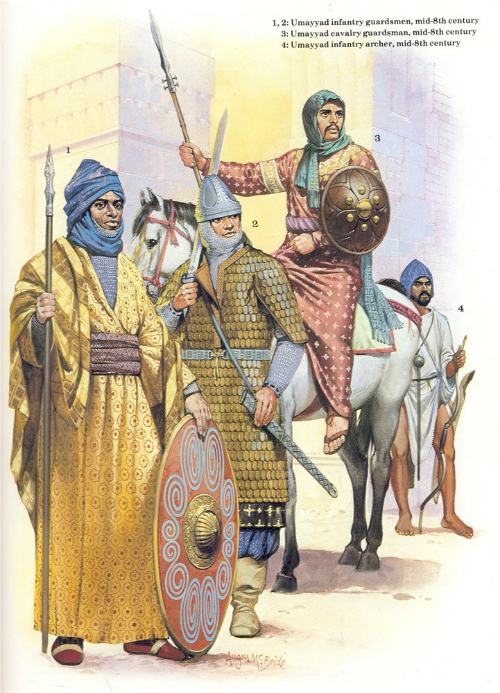
The Muslim prophet Muhammad‘s conquest to leave the Arabian Peninsula was further pursued very soon after his death (632). With the conquest of Syria, Egypt, and the fall of Persepolis in 648, the Sassanid and Byzantine empires were the first to be impacted by these conquests that took place between 635 and 650. The Arabs, on the other hand, failed to conquer Constantinople in 718.
Islamic armies rapidly shifted their attention to the West. However, the First Fitna (Islamic civil war), which resulted in the founding of Kairouan (in Tunisia today), halted the expansion in the 650s before picking up again in the 670s. By the end of the 7th century, the Muslims were making progress toward the Atlantic, but they were encountering growing opposition from the Christian Kusaila’s Berbers, and the Second Fitna slowed them back once more.
However, the onslaught began again at the beginning of the 8th century under the direction of Musa ibn Nusayr, who oversaw the defeat of the infamous Kahina (a Berber rebel), the subjugation of the Berbers, and the establishment of Tangier in 709 as the last settlement up to the Atlantic. Musa then turned to Visigothic Spain, as instructed by the Caliph of Damascus.
The conquest of the Iberian Peninsula
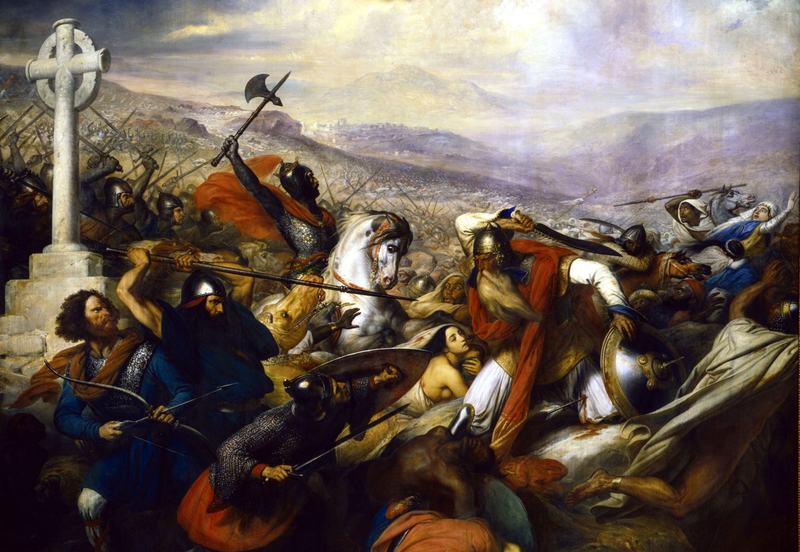
The Muslim forces did not totally invade Spain in the manner of the conquests in the second part of the 7th century. The Muslims invaded the Visigoth Kingdom in 711 in response to the summons of the Visigoth Julian of Ceuta, first by Tarif ibn Malik (which gave his name to Tarifa, the Spanish municipality), who was dispatched by Musa ibn Nusayr (governor of Ifriqiya) and ravaged the area surrounding Algeciras with 400 men.
Then, in July 711, the army of the Visigoth King Roderic was routed in Guadalete by the legendary Berber Tariq ibn Ziyad (the origin of the name “Gibraltar” or “mountain of Tariq”), who led a raid with 12,000 men. After Musa’s arrival in 712, the conquest came to an end. But the Umayyad Caliph summoned the victors back to Damascus in 714.
Muslim soldiers came into Spain first in 711, and they dominated the Iberian Peninsula by 714.
On the Arab side, the sources for the invasion of Al-Andalus are very problematic since they are all written at later dates, in the 9th and 10th centuries. The “Akhbar Majmu’a” of an unidentified author and Ibn al-Qutiyya’s “Tarikh iftitah Al-Andalus,” both of which precede the year 1000, are the two primary sources on which historians base their work on Al-Andalus. A much later source is the “Kitab al-Rawd al-Mitar” by the Andalusian al-Himyari (14th century).
In 721, Musa’s heirs, including one of his sons, completed the conquest. The competition between Arabs and Berbers, as well as between Arabs from the North and the South (rivalries transported from the Arabian Peninsula), however, grew when a discord started in 716. When Umayyads were defeated at the Battle of Tours in 732 by Franks, they withdrew from the captured towns including Narbonne in 754 and thus, the Muslim invasion of Gaul came to a halt.
Next, the Berber Revolt (740-743) by Kharijite puritan preachers in the Maghreb also cut off the peninsula from the rest of Dar al-Islam (Pax Islamica), but it also gave the Arabs the chance to establish themselves in Al-Andalus when the Syrian jund (military detachment) dispatched to quell the uprising ended up in Spain and settled there in 741.
The Umayyad Caliphate of Al-Andalus
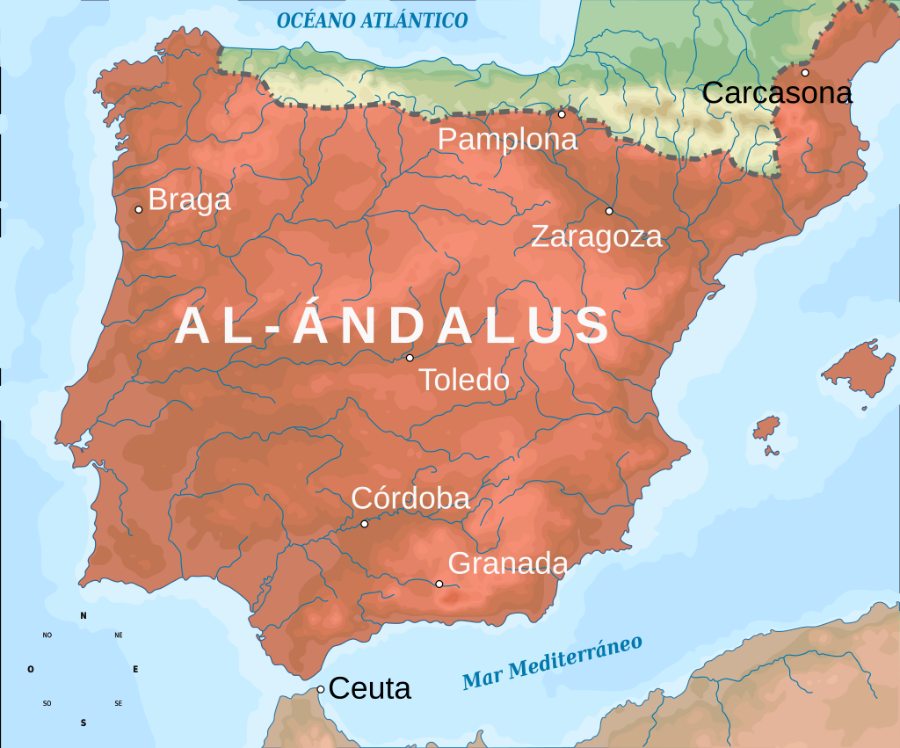
The Umayyad Caliphate of Damascus was overthrown in favor of the Baghdad-based Abbasids during the 750s, which proved to be a turning point in the history of the whole Muslim empire. Al-Andalus was reliant on the Kairouan province and was often at odds with the little Christian kingdoms in the North. However, Abd al-Rahman, who is described in the chronicles as the last surviving member of the Damascus Umayyads, showed up in 755. In Cordoba in 756, he defeated the Arab noble Al-Fihri’s army, crowned himself emir, and ruled until 788. He devoted all these years to organizing and bringing order to the emirate, which developed into a haven away from the East’s unrest. He was seldom involved in foreign affairs and had no role in the disastrous Frankish Battle of Roncevaux Pass in 778.
Successive emirs, especially Abd al-Rahman’s son Al-Hakam I, tried to Islamize Al-Andalus and extend the Maliki school there throughout the next century. But tensions soon developed, first with the muladis, locals who had converted to Islam. This led to the Faubourg Revolt (of Cordoba) in 818 which was violently put down. The issues with the Mozarabs, the Christians who spoke Arabic and lived in Muslim Spain, and eventually Umar ibn Hafsun’s major uprising at the end of the 9th century followed next. This occurred in the benevolent background of the emirate power’s breakdown between 870 and 880, known as fitna (a civil conflict among Muslims). This period was specifically exploited by a man named Abd al-Rahman III.
When it comes to the sources regarding to this period, historians mostly depend on Ibn Hayyan’s “Muqtabis” (987–1076), and Ibn Idhari’s “Al-Bayan al-Mughrib,” as well as the writings of the Cordoba martyrs Eulogius and Alvare.
The Umayyad Caliphate of Cordoba
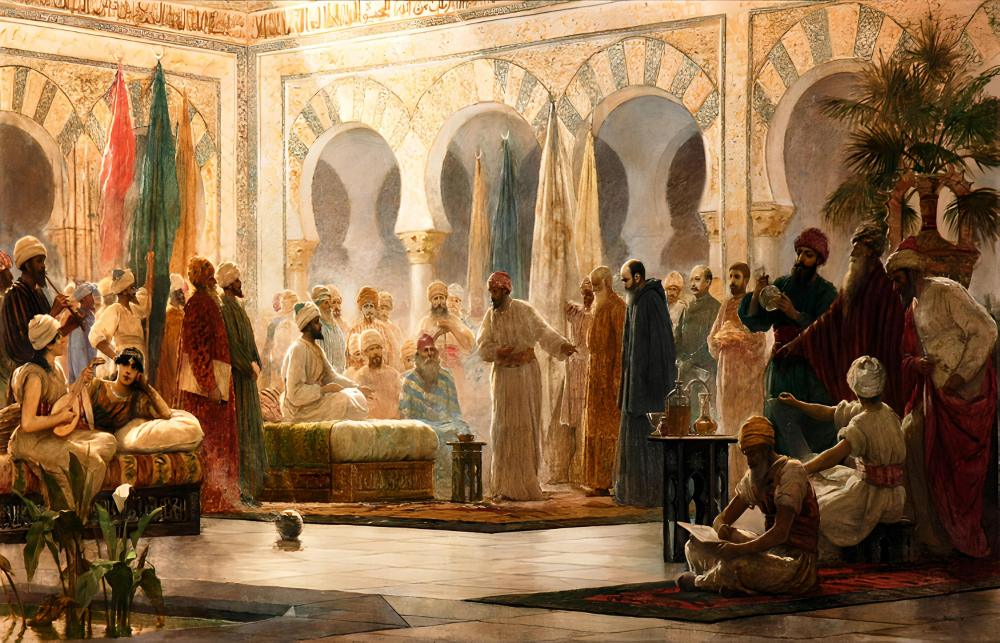
After Muhammad I of Córdoba’s death in 884, the Emirate of Umayyad disintegrated, and his successors were unable to quell the uprisings, which included Umar ibn Hafsun’s in 888. Additionally, the Christian nations resumed their threats.
Things did not start to change for the better until Abd al-Rahman III came to power in 913. He started the process of uniting the provinces of Al-Andalus while tenaciously suppressing Ibn Hafsun’s and his successors’ uprising, which he finally put an end to in 929. He assumed the caliphate in the same year, asserting the validity of the former Umayyad caliphates in opposition to both the Abbasid and the Fatimid caliphates.
Al-Andalus entered its golden age under Abd al-Rahman III, especially in terms of culture. It was a restorative reign. In 936, he constructed Madinat al-Zahra, a city palace that eventually eclipsed Baghdad as the cultural epicenter of the Muslim West. It was located close to Cordoba.
The caliph was less successful in terms of foreign policy since, despite the Fatimids leaving the Maghreb for Cairo, their new city, he did not fully succeed in establishing himself in the Maghreb. Even though the Christians’ assault was hindered in Al-Andalus by their divisions, the Islamic Caliphate of Córdoba was nonetheless crushed by Leon at the Battle of Simancas in 939. Nevertheless, Abd al-Rahman III was able to preserve a certain status quo and even interfere in relations between Christians because of his political and diplomatic skills.
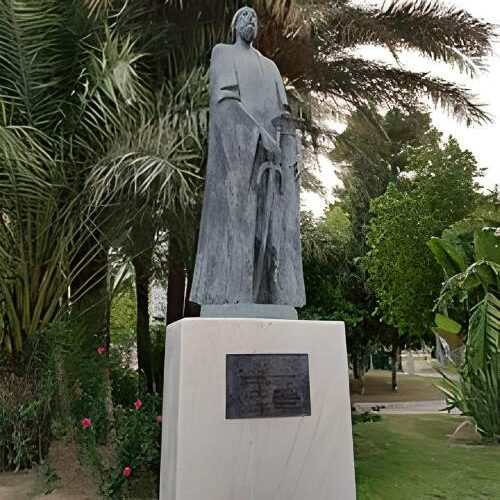
Al-Hakam II, his son and successor, was more of a scholar than a military man after his death in 961. With the exception of the Maghreb, where he was more assertive than his father, he was highly informed in the arts and culture but showed little interest in foreign politics. However, since the caliph did not leave his palace, his caliphate was said to be immobile. Al-Andalus was enjoying a significant cultural boom, but the caliph’s death in 976 revealed the true frailty of Cordoba’s rule. Hisham II, the son of Al-Hakam II, was 10 years old, and Almanzor was Hisham II’s hajib (chamberlain) who seized power during Hisham II’s reign and eventually caused the Caliphate to crumble.
The sources connected to the caliphate are more plentiful, and they also include those that relate to the earliest days of Al-Andalus. We start with “The Anonymous Chronicle of Abd al-Rahman III,” which was written somewhere around the year 1000, or the previously cited Ibn Hayyan.
Al-Andalus attained what is often seen as its apogee with the establishment of the Caliphate: governmental power as well as cultural influence. A need to assert one’s “Andalusi identity,” which ironically became stronger with the caliphate’s slow and steady demise, first in reality with the hajibs’ grasp on power, then formally with the caliphate’s dissolution in 1031 and the rebirth of minor emirates: the taifas.
The decomposition of the caliphate
In place of the infant son of Al-Hakam II, the hajib (grand vizier) Muhammad ibn Ami’Amir therefore had actual control over the empire. He ruled the nation from 978 to 1002 (the year of his death), and he is best known for being a champion of the Holy War. Using the help of the Berbers, he terrorized the Christian kingdoms by pillaging Santiago de Compostela in 997 and Barcelona in 985 (the little Catalans are still terrorized by the bogeyman Almanzor). He used the moniker “Al Mansur” as a result of his victories against the Infidels and other foes like General Ghalib (the Victorious). In 998, he even went so far as to take over Fez.
With the symbolic building of a “competitor” palace at Madinat al-Zahra, he effectively established a “parallel dynasty.” He was exceedingly strict when it came to religion, even going so far as to “purify” Al-Hakam II’s library and put an end to a Mutazilite “plot” (Muslim “rationalists”). His passing leaves the system unchanged: a caliph remained just symbolic, and a hajib became the malik who rules. His son ‘Abd al Malik replaced him in 1002, and although he had to foil schemes in 1003 and 1006, he was still able to defeat the Christians and acquire the title of Al Muzaffar in 1007 as a result (the Triumphant ). However, they were mostly defensive conflicts without a goal of conquest.
Al Muzaffar passed away in 1008, and it’s possible that his brother, who took over, poisoned him. This Sandjul, also known as Sanchuelo (whose mother was the daughter of Sancho, the King of Navarre), made the error of having Hisham II formally designate him, which led to the Cordoba Revolution in 1009. Sanchuelo was slain; the caliph abdicated in favor of a relative…
Twenty years of turmoil began at this time, fuelled by revived animosities between Arabs and Berbers as well as the actions of Christian kings: the new caliph was pitted against an Umayyad, Sulayman, who was backed by Castile; Cordoba was attacked by Berbers in 1009 and sacked. Nevertheless, the Caliph was able to regain it in 1010 thanks to Raymond Borrell, Count of Barcelona. The sequel was also perplexing: Hisham II temporarily reclaimed the throne, followed by three years under Sulayman al-Musta’in, who depended on steadily stronger regional forces, particularly the Berbers.
Then the Hammudids, a renowned dynasty descending from the Idrissids, appeared (originally from Morocco). From 1009 through 1013, they supported Sulayman and controlled Ceuta, Tangier, and Algeciras. Then, in their dreams, they saw an Andalusian-Maghreb caliphate. Ali ibn Hammud conquered Malaga in 1016, traveled to Cordoba, where he assassinated Sulayman and had himself crowned Caliph “Al Nasir li Dini Llah” as Abd al-Rahman III. In 1018, his brother took over for him.
However, neither the populace nor the local government backed the Hammudids; as a result, Al Murtada, an Umayyad caliph, was elected. This one undertook an expedition to Elvira against the Hammudid allies, the Zirid Berbers of Granada, and was beaten; he was killed at Guadix. As a result, the Zirids let the Hammudids continue, and Al Mamun, a moderate, succeeded him as caliph, keeping the peace until 1021. However, the caliph there had a deal with the Berber Yahya uprising, which pushed him out of Cordoba. He was forced to relocate to Malaga, where he passed away in 1035, since the populace of the capital continued to reject Maghreb dominance.
Therefore, the failures of the Hammudids as well as the Umayyad restoration at the start of the 1030s were notable. The municipal authorities were now too strong and rejected Cordoba’s attempts to exert authority. When Hisham III was overthrown in 1031, the Caliphate literally vanished.
Taifa kingdoms
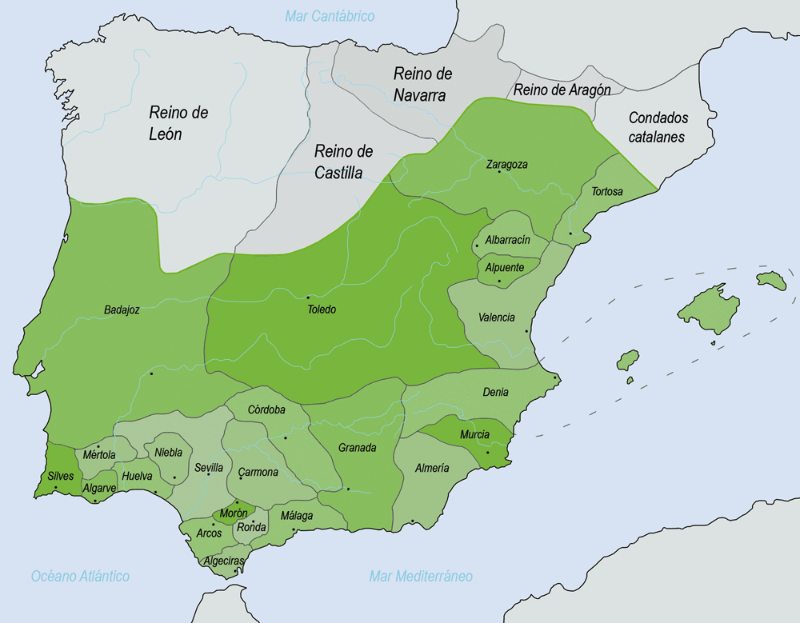
Al-Andalus was thus divided into autonomous and rival Taifas states in 1031. There were roughly twenty of them, and their reliability may sometimes be called into doubt. Others were municipal or vizirate, and others were monarchical (the Banu Djahwar of Cordoba for example). There were Arab and Berber emirates, but none claimed the title of malik or, clearly, much less, the caliph. By contrast, the rivalry between these courts inspired creative and cultural emulation, which had nothing to envy about the golden age of the Caliphate, even if the historical sources are inadequate (including Ibn Hayyan’s or Ibn Hazm’s). Some good examples include the Seville of Ibn Abbad and Ibn Ammar (1069–1091) or the Zirid Pomegranate of Abd Allah (1073–1090).
The issue of power’s legitimacy led to a number of crises, a muddled event history, and recurrent confrontations. In the latter part of the 11th century, successful dynasties included the Granada Zirids and the Cordobese Abbadites.
The Christian kingdoms in the north of the peninsula were now in a stronger position than the Muslim powers, who were previously able to silence their internal conflicts for a while. They were successful in creating the rule of pariahs starting in the 1050s, which allowed them to actively interfere in Muslim uprisings and enhance their wealth via tributes given by the taifas. This resulted in Toledo’s victorious recovery in 1085, a century after Al Mansur’s siege of Barcelona.
As we’ve seen, the Caliphate of Cordoba effectively fell in 1031, leading to the establishment of the government of the pariahs. It strengthened Christian forces against Muslims by undermining their influence. In the 1050s and 1060s, they started their onslaught again. With assistance from the Franks and the backing of the pope, they temporarily captured Barbastro in 1064 under the command of Ferdinand I before it was immediately retaken by the Muslims. This was the first “Spanish Crusade.” However, Alfonso VI of Castile was most responsible for the development of “a real doctrine of the Reconquista,” in the words of Zirid emir Abd Allah, which resulted in the tranquil conquest of Toledo in 1085.
The Almoravids were summoned
Involved with the Sanhaja, the Almoravids were a North African dynasty of Berber descent that finally overran the western Maghreb in the early 1080s after destroying Fez in 1075 and establishing Marrakech in the 1060s. The Empire then stretched to Tlemcen’s 1080-adopted frontiers, which included the whole of Morocco’s Atlantic coastline in what is now Senegal. They want to be rigorist Malikis and were headed by Yusuf ibn Tashfin.
After being shocked by the loss of Toledo and the rise of Christianity, the Andalusian emirs made an appeal to the Almoravids under pressure from the populace. The jihad was declared, which resulted in Zallaqa’s success in 1086: the Christians were once again hindered and could only advance eastward (Huesca, 1096). The Almoravids departed after their victory…but decided to return in the later years of the 11th century and removed the emirs, thus the Andalusians were not yet through with their shocks. Only Valencia managed to stave them off owing to the renowned El Cid‘s defense (who had gained control of the city in 1094); they nevertheless managed to defeat it in 1110 after the death of El Cid (in 1099).
The Almoravids attempted to enforce their strict interpretation of the Maliki school from the Maghreb, where they exert their influence. They conferred on themselves new titles, such as “Amir al-Muslimin,” and the Caliph of Baghdad even recognized them. Their authority and power were derived from the ulemas and legal scholars like Al-Badji and Al-Hadrami. The “sahib al-suq” (head of markets) and other magistracies were even given to (religious) jurists; society was hierarchical and centralized, with the fuqaha pervasive (doctors of fiqh, Muslim law).
This regime, though, was unable to establish itself in Al-Andalus because it was regarded as foreign and its overly rigid interpretation of Maliki Islam contrasted with that of the Andalusians, whom we might perceive as being more “lax” due to anachronism; they were also influenced by eastern “competitors” like al-Ghazali (d. 1111). The military victories of Alfonso the Battler over the Christians in the years 1114, 1118 (Zaragoza), and 1120 (Cutenda) did not contribute to the Almoravid rule being strengthened since the legitimacy of the emirs was also attained via military triumph.
In addition, another Berber dynasty, the Almohads, posed a challenge to them in the Maghreb, their very core.
The new Almohad Caliphate
Up to the 1140s, the Almoravid weakness became worse. The Ibn Tumart insurrection in the Anti-Atlas mountains, led by the future “mahdi” of Almohad, began in the 1120s. Taifas were once again visible in Al-Andalus, mostly in the towns, although they were quite weak, particularly in the face of the Christian ascendancy. As a result, the late Umayyad Caliphate’s fleet’s base of operations, the vital port of Almeria, was captured by Christians in 1147. Up until 1172, Valencia and Murcia were only contested by the Murcian Emirate of Ibn Mardanish.
The Almohads, under the leadership of Ibn Tumart, however, brought down the Almoravid strongholds in the Maghreb one by one at the same time. In 1147, the Almoravid monarchy finally collapsed, and the Almohads expanded their power as far as Ifriqiya (present-day Tunisia).
The new dynasty’s theology was unique and was based on the Mahdi figure of Ibn Tumart (who passed away in 1130), who was inspired by al-Ghazali. They refer to themselves as the muwahhidin and uphold the exclusivity of God (tawhid), departing from both the Almoravids and the majority of Islamic orthodoxy, that of the “uncreated” Koran; they rejected legal institutions and decried exegesis and ijtihad (interpretation). This forced them to proclaim themselves caliphs in order to contend with the Abbasids, Ibn Tumart’s successors led by Al-Mumin.
The Almohads then entered Al-Andalus, recapturing Almeria from the Christians in 1157 after capturing Cordoba in 1148, Granada in 1154, and most importantly, Almeria in 1148. They attempted to impose a holy war mentality, similar to the Almoravids, which culminated in the great Alarcos victory in 1195. However, these achievements conceal genuine problems, particularly in the face of a growingly unified Christian population. When Rabat, their capital city, was built in 1150, it served as a symbol of an empire that had adopted a more defensive philosophy.
The Almohads were propelled to present themselves as jihadi warriors and to envision the prospect of defeating the Christians by the appearance of unity and stability on its foundations, as well as by a claimed legitimacy with the title of caliph. However, this led to the catastrophe of the Battle of Las Navas de Tolosa in 1212, when Alfonso VIII’s army routed the Muslim army despite being outnumbered. The same fate befell the new rulers of Al-Andalus as it did the Almoravids: a greater than average interest on the part of the Andalusians in their jihad and their philosophy. The Muslims of the peninsula did not support the Almohads, who were likewise seen as foreigners.
The Almohad’s struggles in the Maghreb against the Banu Marin and the Hilalians were compounded by the defeat at Las Navas de Tolosa. Murcia (1224) and Seville (1227) came up in Al-Andalus with Christian backing. The Hafsids of Tunis, who claimed the Caliphate in 1253, and the Merinids of Meknes and Fez forced Marrakech, where the Caliphate had been difficult to preserve until 1269, to cede control.
The third phase, known as the taifas, and, most importantly, the emergence of the Nasrids of Granada, the last Muslim state of the Iberian Peninsula, followed the collapse of the Almohads in Al-Andalus.
The taifas system was reinstated in Al-Andalus as a result of the Almoravids’ and Almohads’ subsequent failure. However, this time the Christian drive looks unstoppable, and only one emirate ultimately managed to resist—until 1492. The tales surrounding the kingdom of Granada, the last Muslim stronghold in Al-Andalus, had been rekindled by the romantics’ love with the Alhambra, which was comprehensible for anybody who had visited. How could this little Emirate endure such a protracted battle against the numerous Christian alliances? And why has it grown to be so renowned?
Taifa rule came to an end, and the Nasrid Kingdom (Emirate of Granada) rose to power

Ibn Hud, who was recognizable practically everywhere in 1228, with the exception of Valencia, attempted to stand up to the Christians while professing loyalty to the last Almohads and later, particularly to the Abbasids. However, he was routed at Alanje in 1231, and the Almohads finally abandoned Al-Andalus in 1229.
Around the two great kings, Jacques I of Aragon (1213-1276) and Ferdinand III of Castile (1217-1252), the Christian advance in Al-Andalus was accomplished; the little Andalusian emirates succumbed to their strikes one by one: Cordoba in 1236, Seville in 1248,… But the rise of Muhammad ibn Nasr, an unnamed emir, hindered them. He declared himself king in 1232 and was from Arjona, which was close to Jaen. Despite all odds, he managed to win the allegiance of Granada (where he settled) in 1237, then from Almeria and Malaga in 1238 by taking advantage of the death of his competitor Ibn Hud.
Muhammad I was therefore forced to fight the Spaniards alone, especially in Castile, while Granada experienced a massive flood of Muslim refugees (who eventually settled in the Albayzin) and was forced to cede territory: After a protracted siege, Jaen surrendered in 1246 and Arjona in 1244. Being a skilled negotiator, the sultan managed to soothe his ties with Aragon while putting an end to the Castilian raids by consenting to become Ferdinand III’s vassal.
He used the chance to expand the existing stronghold of Granada and build the fortified complex that became the heart of his realm, the Alhambra, the crown gem of Al-Andalus. Additionally, he implemented an extremely strict tax policy and started to cultivate opponents inside his emirate. Thus, in 1266, rebellions by the strong Banu Asqilula family took place in Guadix and Malaga. Hafsid Abu Zakariya, a partner with whom he failed in their 1262 effort to seize Ceuta.
When the Nasrid ruler backed the Mudéjars of Murcia and Jerez in 1264, fighting with the Castilians restarted in Al-Andalus. Muhammad I passed away in 1273, when the Banu Asqilula still controlled Malaga and was in the midst of a Spanish counterattack.
The kingdom’s unification and the Battle of the Strait
The Nasrid sultanate’s founder’s passing might have signaled the beginning of its demise, but Muhammad II expertly carried on his father’s legacy. He attempted in vain to negotiate with the Spanish and the Banu Asqilula during the 1270s, but more importantly, he had to deal with unrest in Algeciras, in the very southern region of Al-Andalus, where the governor turned to the Merinids, giving them control of the city in 1275 while the Nasrids failed once more in front of Malaga.
In order to thwart the Marinid march, Muhammad II chose to speak with Alfonso X of Castile, who was still remembered by the last Andalusians who had lived in Al-Andalus. Algeciras was attacked by the Castilians in 1278, the Merinids were cut off, and in 1279 Malaga finally emerges from Asqilula’s rule to bow to Granada.
While doing so, Muhammad II was nevertheless able to secure the submissions of significant Al-Andalus locations like Salobrena and Almunecar in 1282.
The classic Al-Andalus game of shifting allegiances continued throughout the following years, though, with Merinids and Castilians fighting against Granada, Nasrids and Merinids fighting against Castilians, and so on. Only Aragon appeared to maintain its neutrality, while Castile started to experience internal strife. Although simply a ceasefire, the peace of Marbella in 1288 permits Banu Asqilula’s ultimate capitulation. Allies of Castile and later Tlemcen, the Nasrids renewed their conflict with the Merinids for control of Tarifa until turning on the Spaniards after Sancho IV’s death in 1295.
Al-Andalus saw a brief respite at the start of the 14th century when Castile opened communications with Granada, Aragon negotiated treaties with the Nasrids in 1302, and Muhammad II even signed accords with the Merinids soon before his death the following day. The dissident Merinid Uthman ibn Abi al-Ula, who declared himself sultan in 1307, gave his backing to his successor (and son) Muhammad III, who didn’t wait more than two years to start showing significant interest in Ceuta.
The Nasrid used this backing to establish himself as the ruler of Ceuta and launch a fierce privateering campaign in the strait, specifically attacking the ports of Aragon. By bringing Uthman back to Andalusia, he even avoided alienating the Merinids. Sadly, he was compelled to resign because of the Sultanate of Granada’s first internal conflicts. In addition to losing Ceuta in 1309, his rival Nasr also had Gibraltar seized by the Castilians. He even had to return Algeciras and Ronda, which Muhammad II had won back in 1296, to the Merinids in order to quiet them. Fortunately for the Nasrids, Almeria was less successful for Castile, and particularly Aragon.
Al-Andalus had more upheaval throughout the first part of the 14th century, including coups and contests over control of the strait. The Nasrids, the Merinids, the two Spanish kingdoms, and even the Hafsids, who were either aligned with or at odds with one another, were engaged in a furious war for control of this very important location. When the Christian troops of Alfonso XI of Castile and Alfonso IV of Portugal beat the Muslim armies of the Nasrids and Merinids at Rio Salado in 1340, the Battle of the Strait came to an end under the rule of Yusuf I (1333–1354). In addition, the Merinids permanently departed Al-Andalus while the Sultan of Granada returned to the Alhambra.
The peak of Nasrid
However, ironically, Yusuf I’s rule here heralded the start of what might be considered the apex of Nasrid dominance. As soon as he got home after the defeat of the Rio Salado, he signed it together with his significant works at the Alhambra (such as the Porte de la Justice). The Sultan struck a ten-year ceasefire with Alfonso XI, who was chasing the Merinids out of Algeciras, and managed to forge a strong bond with Peter IV of Aragon. Unfortunately, in 1354, a lunatic killed Yusuf I.
His son Muhammad V succeeded him and surrounded himself with capable individuals, like the vizier Ibn al-Khatib and the hajib Ridwan. The Merinids were later calmed down by all three, but mainly by Aragon, which resulted in a new alliance with Castile. Starting in 1359, this was made accessible to Nasrid naval bases like Malaga. However, bad Nasrid practices returned, and Muhammad V was forced to deal with a plan orchestrated by Isma’il. While fleeing, he was received alongside Ibn al-Khatib at the Merinid court. His two successors, Isma’il and Muhammad VI, did not rule for very long, and Peter I of Castile assisted the “legitimate” sultan by sending his soldiers to invade Malaga and subsequently Granada.
In 1362, Muhammad V ascended to the throne of the Alhambra and resolved to remain impartial in the conflict between Castile and Aragon. Muhammad V ultimately launched a fierce privateering campaign against the Aragonese as the battle intensified (the Great Companies of Du Guesclin arrived on the scene).
He had the Mérinides and Tlemcen’s backing in 1366, but when things became more problematic, he had to form an alliance with Henri II de Transtamare. In keeping with Al-Andalus’ and Nasrid’s traditions, the sultan, over the next years, swayed alliances to support different demands, enabling him, among other things, to eventually retake Algeciras in July 1369 (even if he took the opportunity to demolish it).
On May 31, 1370, a ceasefire was ultimately agreed upon, ushering in a protracted era of calm in Al-Andalus. Trade contacts improved, for instance with Aragon (regular treaties between 1376 and 1387), and Castile also agreed to a truce in 1390, despite some tense moments. The situation with the Merinids was more contrasting, and even the obedient Ibn al-Khatib took the brunt of it after being charged by Muhammad V with spying for the Merinids. However, this one came from Cairo as well as Tunis and Tlemcen.
Finally, his reign was distinguished by significant works, much like Yusuf I’s, and he too left his stamp on the Alhambra. The last Muslim stronghold in Al-Andalus was at its height when he passed away in 1391.
Civil warfare and the end of Al-Andalus
Muhammad V’s heirs did not have the same level of achievement or, more importantly, talent. The Nasrids found a way to weaken themselves through internal conflicts between potential successors and the rise of extremely powerful political figures, such as the vizier Ali al-Mamin during the sultanate of Muhammad VIII (1417–1419), as well as large families like the Banu Sarraj, even though the Christian kingdoms’ divisions delayed the deadline.
The latter succeeded in installing Muhammad IX as ruler in 1419, and he played a pivotal part in the Nasrid strategy in the years that followed. Afterward, the sultanate entered a very perplexing and unstable phase during which the sultans alternately succeeded and deposed one another before regaining control. Muhammad IX, therefore, held the throne four times between 1419 and 1454. The great towns of Granada, Almeria, and Malaga, which pledge allegiance to the rightful sultan or his competitors, were the scattered parts of the Nasrid realm.
The accession of Abu al-Hasan Ali to power in 1464 marked a crucial turning point in Al-Andalus’s history. He disregarded both his brother and the Banu Sarraj tribe, who had been his supporters. After his military and theological reforms, we then consider the potential of restoration to stability, but mysteriously, starting in 1478, he descended into vice and violence.
The timing was poor since the Spanish united to abolish Al-Andalus at the same time as the union of Ferdinand of Aragon and Isabella of Castile in 1469. The Nasrid differences were exploited by the Catholic Monarchs, who also had the assistance of the sultan’s son, Boabdil, who temporarily assumed control of Granada in 1482. In contrast, Muhammad ibn Sa’d, the brother of Abu al-Hasan, who declared himself sultan in 1485 by having his oldest child assassinated, did not see him as having much legitimacy due to his closeness to the Spaniards.
The Catholic Monarchs still relied on Boabdil, who was only able to hold Granada in 1487 and could not defeat his uncle. By the end of 1489, as they advanced into Al-Andalus, the Spaniards had destroyed fortresses and major towns, including Velez-Malaga, Malaga, Baza, Almeria, and Guadix. Then it was Almunecar’s and Salobrena’s turn.
Boabdil sought to protect Granada, the last major Muslim city of Al-Andalus, after learning rather late that the Catholic Monarchs would not uphold their vows. Beginning in 1491, the siege lasted until January 1492. On January 6, Ferdinand of Aragon and Isabella of Castile joyously marched into Granada and the Alhambra, ending Muslim rule over the Iberian Peninsula, which had begun with the invasion of a small group of Berbers in 711.


